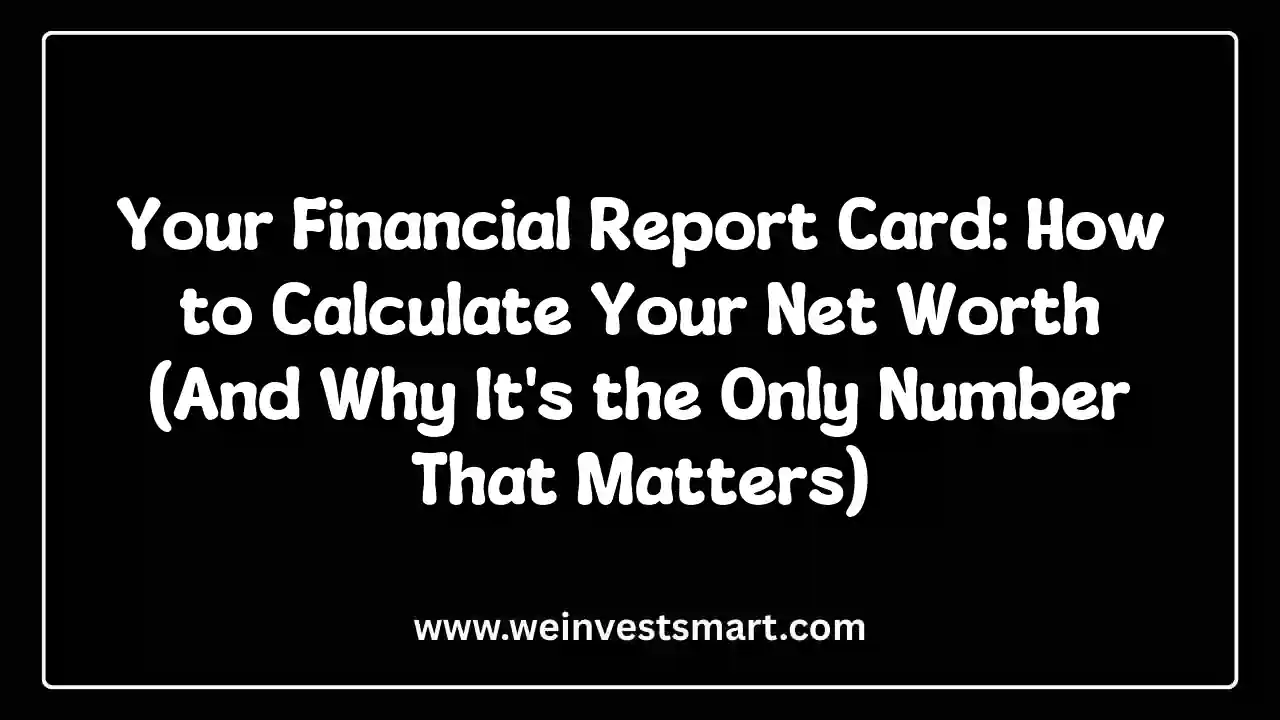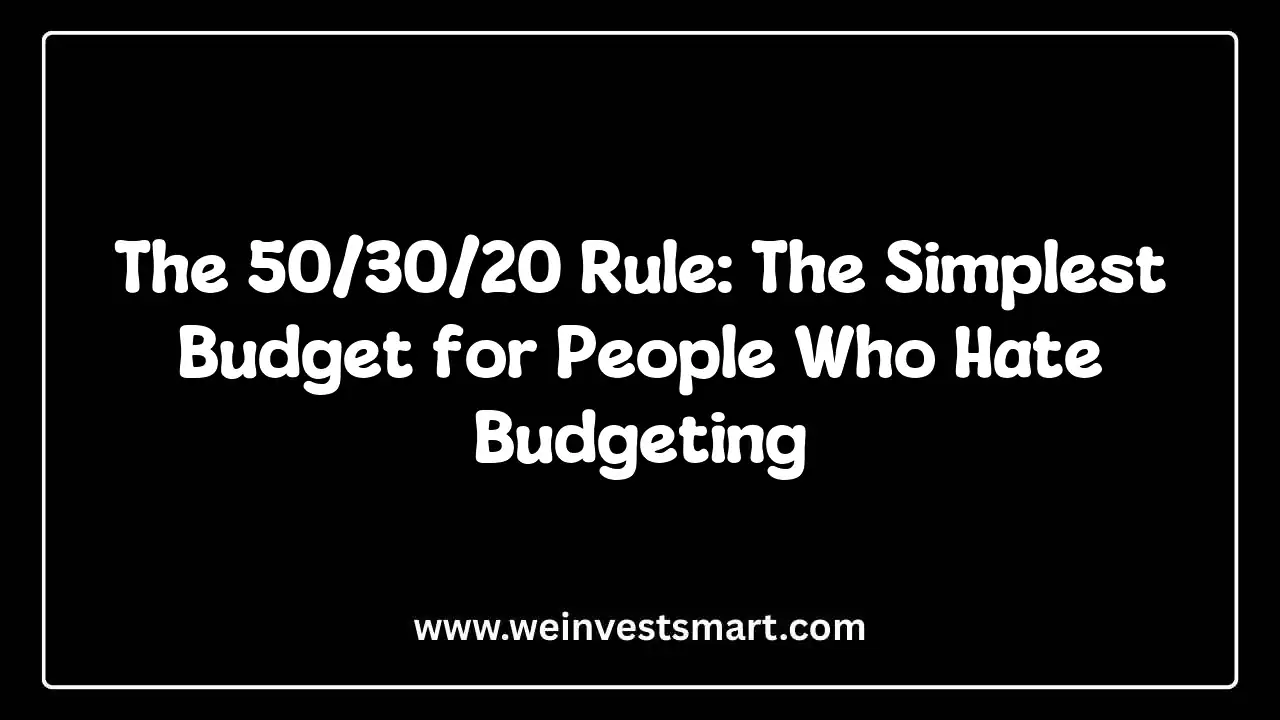· WeInvestSmart Team · personal-finance · 11 min read
The Beginner's Guide to Using Credit Cards Responsibly (And Why You Should)
Bust the myth that all credit cards are evil. Frame them as a tool for building credit, earning rewards, and providing consumer protection—as long as the balance is paid in full every month.
Most of us were raised to fear credit cards. We heard horror stories of people buried under mountains of debt, their lives ruined by the siren song of “buy now, pay later.” The conventional wisdom is clear: credit cards are dangerous, predatory tools designed to trap you in a cycle of high-interest payments. But here’s the uncomfortable truth: that narrative is only half the story. It’s like saying fire is evil because it can burn down a house, completely ignoring the fact that it can also cook your food and warm your home. Going straight to the point, a credit card is not inherently good or evil. It is a powerful financial tool, and its impact on your life depends entirely on how you choose to wield it.
We live in a world where a “cash-only” lifestyle is often praised as the pinnacle of financial discipline. And for someone recovering from a shopping addiction, that might be true. But for the average person, avoiding credit cards entirely is a massive strategic error. You are willingly giving up one of the most effective tools for building your credit score, protecting your purchases, and even getting paid to spend money you were going to spend anyway.
But what if we told you that you could unlock all of these incredible benefits without ever paying a single penny in interest? Here’s where things get interesting. The entire conversation about responsible credit card use boils down to one simple, non-negotiable rule. Obey this rule, and the credit card becomes your superpower. Disobey it, and it becomes your kryptonite. And this is just a very long way of saying that it’s time to stop fearing the tool and start learning how to use it with precision.
The Foundation: The One Rule That Changes Everything
Before we talk about rewards, credit scores, or fraud protection, we must establish the Prime Directive of responsible credit card use.
Pay. Your. Statement. Balance. In. Full. Every. Single. Month.
That’s it. That is the entire secret. Going straight to the point, if you treat your credit card like a debit card—never charging more than you have in your bank account to cover it—you will never pay interest. The high APRs, the scary warnings, the horror stories… they all become irrelevant. They don’t apply to you. You get to use the bank’s money for free for a month, reap all the benefits, and then pay it back before they can charge you for the privilege.
The funny thing is that credit card companies don’t make money from people who follow this rule. They make money from the interest paid by people who carry a balance. By paying your balance in full, you are hacking their system for your own benefit. You are turning a tool of debt into a tool of wealth creation.
You may also be interested in: The Complete Personal Budgeting Guide: Take Control of Your Finances
Superpower #1: How to Build a Great Credit Score from Thin Air
In the modern economy, your credit score is a vital sign of your financial health. Without a credit history, it’s incredibly difficult to rent an apartment, get a cell phone plan without a hefty deposit, or qualify for a loan to buy a car or a house. But this creates a classic chicken-and-egg problem: how do you prove you can handle credit if no one will give you credit in the first place?
Going straight to the point, the most efficient way to build a credit score from scratch is by using a credit card responsibly. Each month, the credit card company reports your activity to the three main credit bureaus (Experian, Equifax, and TransUnion).
Here’s how this builds the five pillars of your FICO score:
- Payment History (35% of your score): By making one small purchase and paying the bill in full and on time every month, you are creating a perfect payment history, the single most important factor in your score.
- Amounts Owed (30%): By paying the balance to zero each month, you ensure your credit utilization ratio is extremely low, which gives your score a massive boost.
- Length of Credit History (15%): The day you open your first card, the clock starts ticking on your credit history. The sooner you start, the better.
- Credit Mix (10%): A credit card adds a line of “revolving credit” to your report, diversifying your credit mix.
- New Credit (10%): You’ve opened a new account, which is a small but necessary step.
This sounds like a trade-off, because you’re introducing the “risk” of a credit card, but it’s actually a desirable thing. We covet this tool because there is no other product that allows you to build all five components of your credit score so efficiently and for free (as long as you pay it in full).
You may also be interested in: Your Financial Report Card: How to Calculate Your Net Worth (And Why It’s the Only Number That Matters)
Superpower #2: Getting Paid to Spend with Credit Card Rewards
Now let’s talk about the fun part. Credit card rewards are a form of rebate or kickback you get for using your card.
Going straight to the point, there are two main types of rewards:
- Cash Back: The simplest form. You get a percentage of every purchase back as cash or a statement credit. A good flat-rate card might offer 2% cash back on everything.
- Points or Miles: These are more complex but can be more valuable. You earn points or miles that can be redeemed for travel (flights, hotels), gift cards, or merchandise.
Here’s where things get interesting. Most people see rewards as a small, insignificant perk. But let’s look at the math. Let’s say your family spends $2,000 a month on normal life expenses—groceries, gas, utilities, subscriptions—all of which can be put on a credit card.
- With a Debit Card: You spend $2,000 and get $0 back.
- With a 2% Cash Back Credit Card: You spend the same $2,000, pay the bill in full, and the credit card company gives you $40.
Over the course of a year, that’s $480 of free money. Over a decade, that’s nearly $5,000. And this is just a very long way of saying that if you are not using a rewards credit card for your everyday spending (and paying it off in full), you are actively turning down a significant financial rebate on your own life.
But what do we do with this information? We must acknowledge the cardinal rule: Never spend extra money to earn rewards. Chasing rewards is a trap. If you buy a $1,000 TV you don’t need just to get $20 in cash back, you haven’t “earned” $20; you’ve lost $980. The strategy is to use the rewards card for the spending you were already going to do.
You may also be interested in: Insurance 101: The 4 Types of Insurance You Absolutely Need and Why
Superpower #3: The Financial Bodyguard - Unlocking Consumer Protections
This is the most underrated and misunderstood benefit of using a credit card. When you pay for something with a debit card, the money is instantly gone from your bank account. If the product is faulty, if the service isn’t delivered, or if your debit card number is stolen, it is your money that is at risk. You have to fight with the merchant and the bank to get it back.
Going straight to the point, when you use a credit card, you are paying with the bank’s money. This fundamentally shifts the power dynamic in your favor.
Here are the key protections a credit card offers that a debit card does not:
- Fraud Protection: If a thief steals your credit card number and makes a fraudulent purchase, you can report it to your card issuer. By law (the Fair Credit Billing Act), your maximum liability is $50, and virtually all major issuers have a $0 liability policy. You are not on the hook for the charge, and it’s the bank’s job to fight to get their money back. If your debit card is stolen, your actual cash is gone, and getting it back can be a long and arduous process.
- Chargebacks: Let’s say you buy a couch online and it arrives broken. The seller refuses to give you a refund. If you paid with a debit card, you’re likely out of luck. If you paid with a credit card, you can initiate a chargeback. You tell your credit card company that you didn’t receive the goods as promised. They will investigate, and if your claim is valid, they will forcibly pull the money back from the merchant’s account and credit it to yours. It is the ultimate consumer protection tool.
- Extended Warranties and Purchase Protection: Many credit cards automatically extend the manufacturer’s warranty on items you purchase. Some also offer purchase protection, which will cover the cost to repair or replace a new item if it’s accidentally damaged or stolen within the first 90 days.
You may also be interested in: Marginal vs. Effective Tax Rate: The Difference and Why It Matters
How to Choose and Use Your First Credit Card Responsibly
If you’re a beginner, the wall of credit card offers can be overwhelming. Here’s your simple action plan.
Step 1: Choose the Right “Starter” Card
- If you have no credit history: Start with a secured credit card. As we’ve discussed, you provide a small deposit, which becomes your credit limit. This is the surest path to approval.
- If you have some credit history (or are an authorized user): Look for a student card or a simple, no-annual-fee cash back card. Don’t worry about fancy travel rewards yet. Your goal is to build a solid foundation.
Step 2: The “Autopilot” Method for Building Credit This is the safest way to start.
- Pick one small, recurring bill that you already pay every month (like Netflix or Spotify, which is around $15).
- Set that one bill to be automatically paid by your new credit card.
- Set your credit card to be automatically paid in full from your checking account every month.
- Put the physical card in a drawer and don’t touch it.
You have now created a perfect, automated credit-building machine. A small charge reports to the bureaus, showing activity. Your utilization is minuscule. And the payment is always on time.
Step 3: Graduate to Everyday Spending Once you’ve proven to yourself for 6-12 months that you can handle the autopilot method, you can graduate to using the card for more of your everyday expenses to start earning serious rewards. But the mindset must remain the same: you are still only spending money that is already sitting in your checking account.
You may also be interested in: Financial Intimacy: 5 Essential Money Conversations to Have With Your Partner
The Bottom Line: The Choice Is Yours
Credit cards are a powerful tool, and like all powerful tools, they demand respect. The narrative that they are universally evil is a simplistic story we tell to avoid the more complex truth: they are amplifiers of our own habits.
If your financial habits are undisciplined—if you tend to spend impulsively and live beyond your means—a credit card will amplify that behavior and lead you into the horror story of debt.
But if your habits are disciplined—if you are a conscious spender who lives within a budget—a credit card will amplify that behavior. It will build your credit, pay you for your spending, and protect you from fraud.
And this is just a very long way of saying that the credit card is a mirror. The person who gets into trouble with it is the same person who would have gotten into trouble without it. The person who uses it to get ahead is the person who was already on the path to success. Don’t fear the tool. Master yourself, and then master the tool for your own benefit.
Using Credit Cards Responsibly FAQ
What are the benefits of using credit cards responsibly?
Using credit cards responsibly offers benefits like building credit, earning rewards, and fraud protection, as long as you pay the balance in full each month.
How do I build credit with credit cards?
To build credit, use a credit card for small purchases, pay the balance in full and on time each month, and keep your utilization low. This creates a positive payment history and improves your credit score.
What are the risks of credit card debt?
The main risk is high-interest debt if you carry a balance. Credit cards have APRs up to 25%, so even small balances can grow quickly. Always pay in full to avoid this.
How much credit card debt is too much?
Any credit card debt is too much if you can’t pay it off in full each month. Aim for zero balance to avoid interest charges and maintain a good credit score.
What should I look for in a credit card?
Look for no annual fees, cash back or rewards, and FDIC insurance. For beginners, start with a secured card if needed, and focus on cards that help build credit.
This article is for educational purposes only and should not be considered personalized financial advice. Consider consulting with a financial advisor for guidance specific to your situation.



